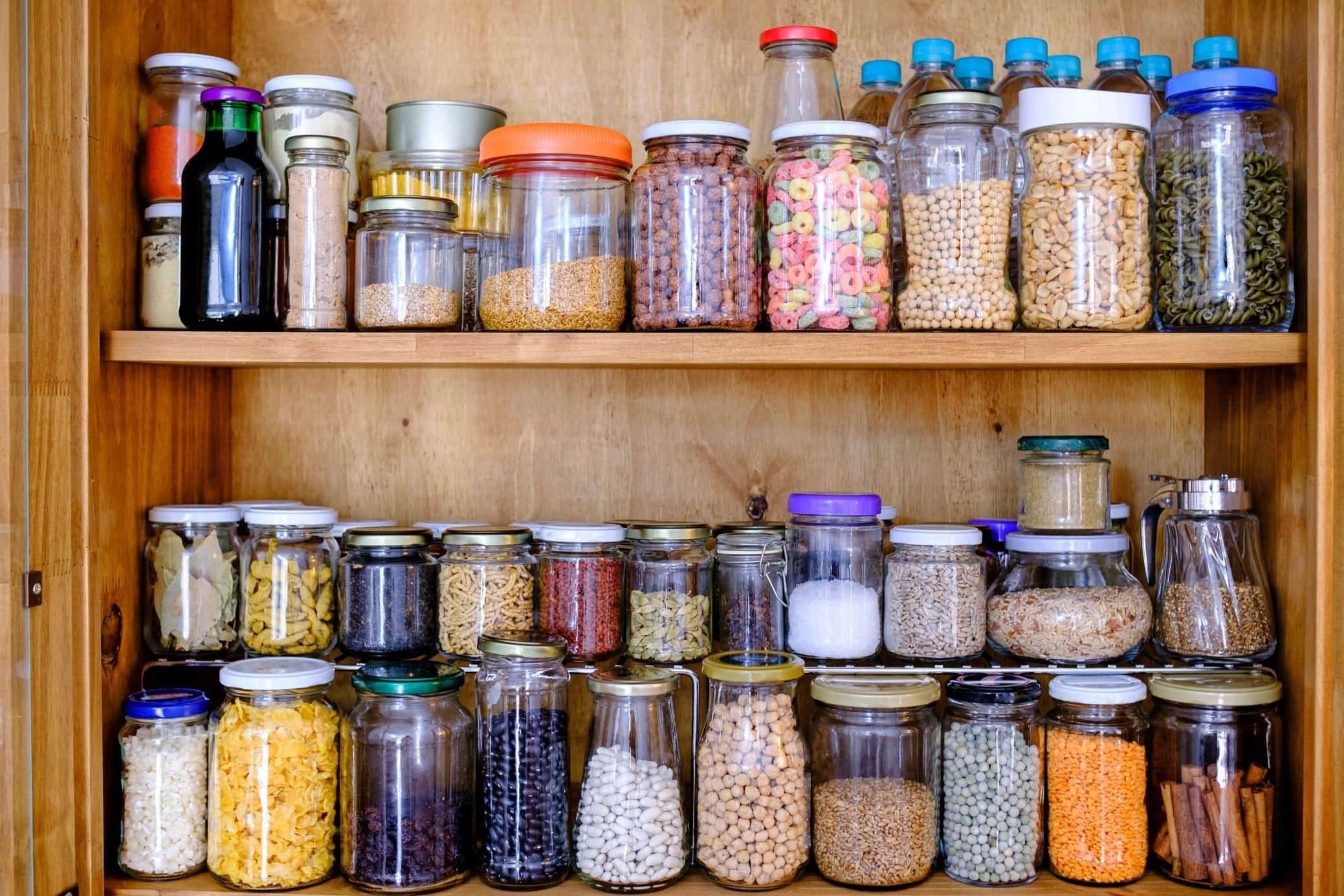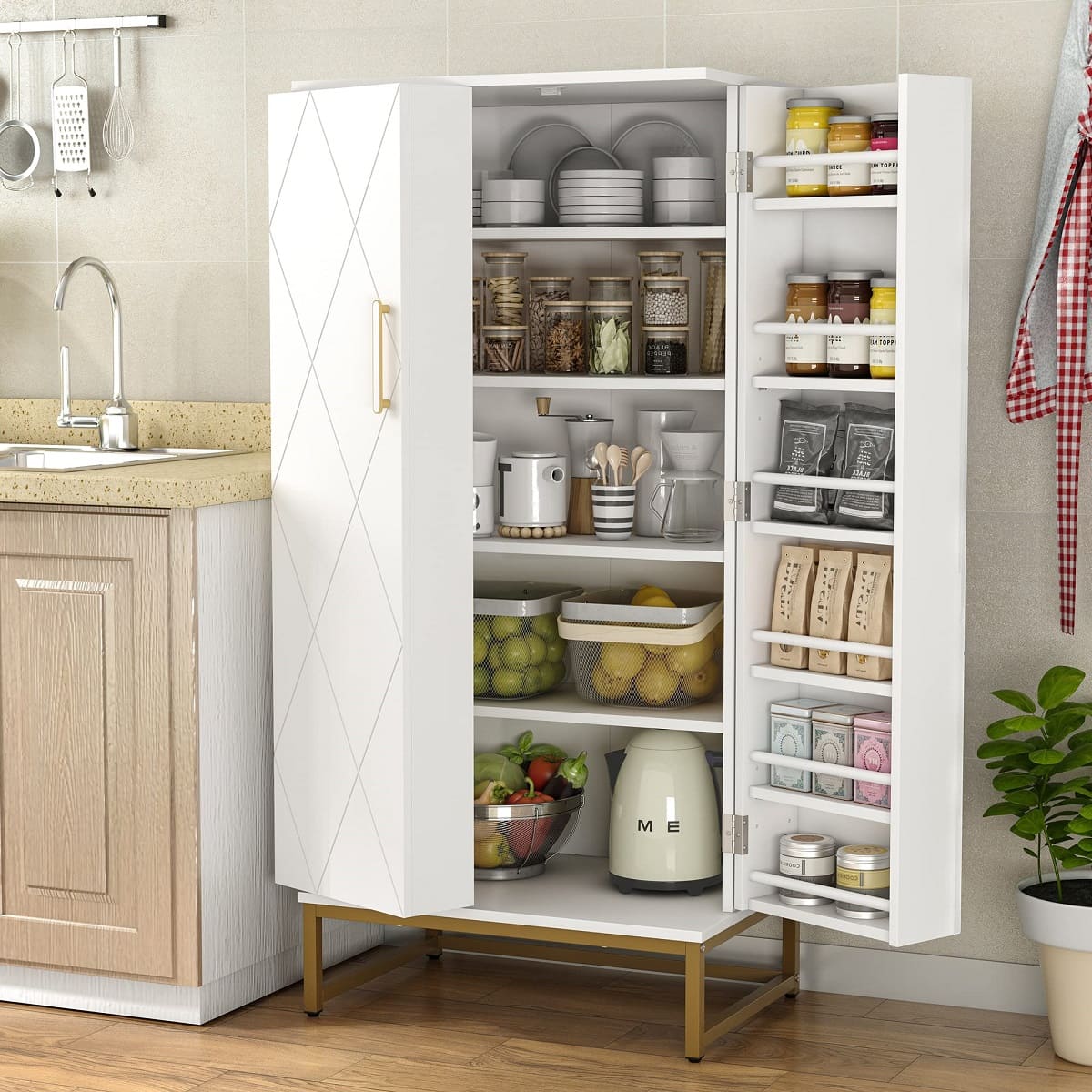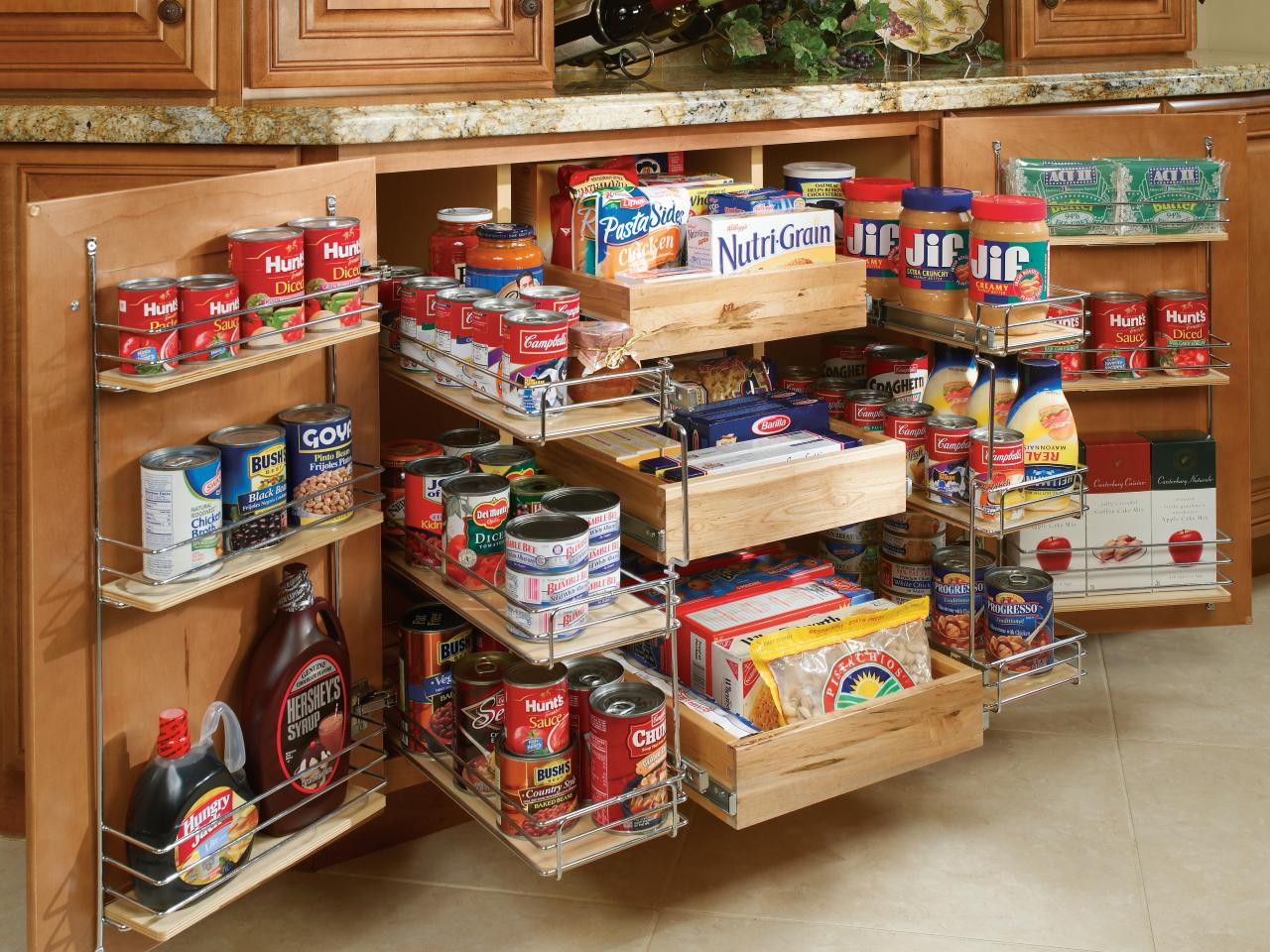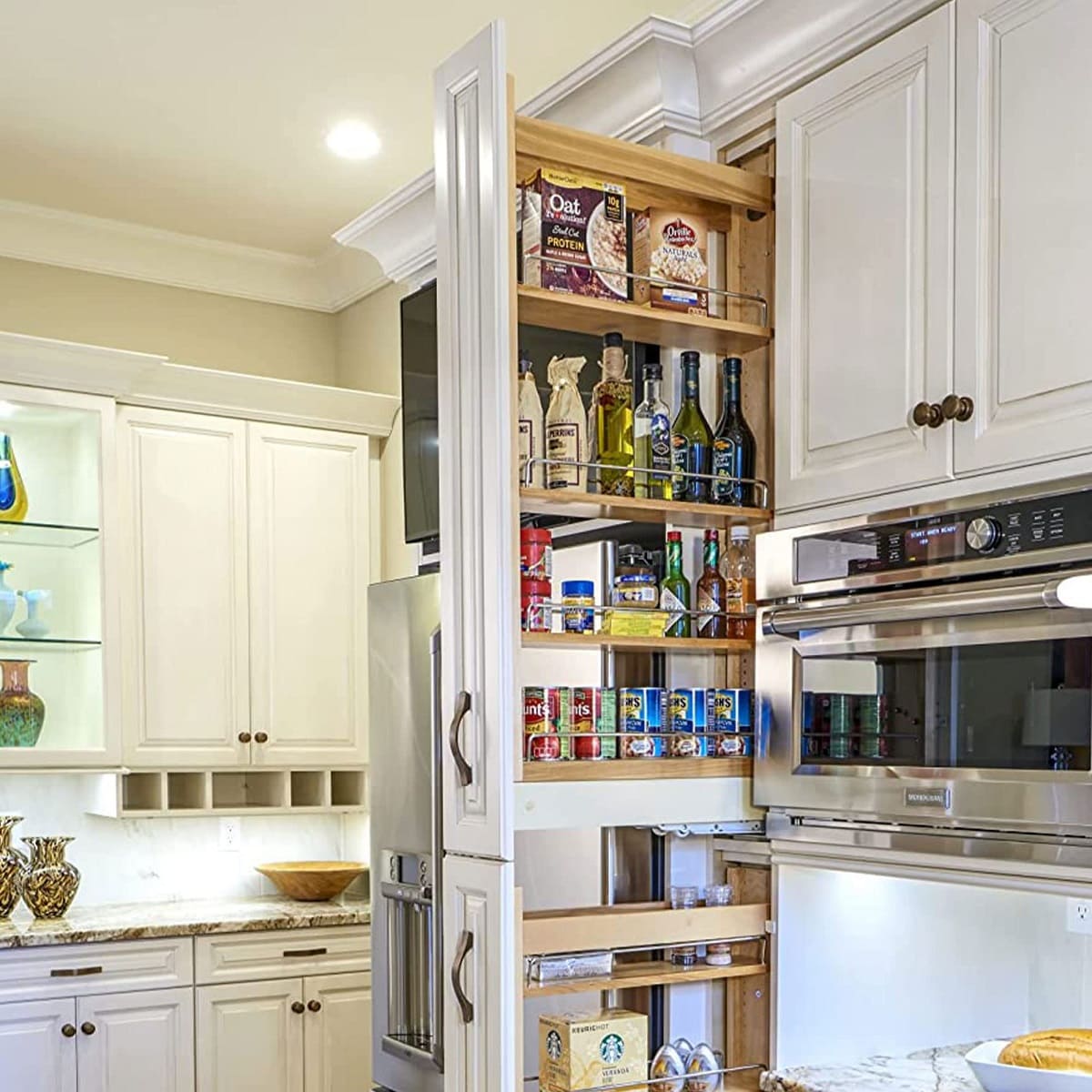Home>Storage & Organization>Kitchen Organizing Tools>How To Organize Deep Pantry


Kitchen Organizing Tools
How To Organize Deep Pantry
Modified: August 24, 2024
Discover the best kitchen organizing tools and tips to efficiently organize your deep pantry. Maximize space and keep everything in order with our expert advice.
(Many of the links in this article redirect to a specific reviewed product. Your purchase of these products through affiliate links helps to generate commission for Storables.com, at no extra cost. Learn more)
Assessing Your Deep Pantry Space
Before diving into the organization process, it's crucial to assess your deep pantry space. Take a good look at the shelves, drawers, and any other storage areas within your pantry. Consider the depth, height, and width of the space, as well as any unique features such as pull-out shelves or built-in racks. This assessment will help you determine the best organizational solutions for your specific pantry layout. Additionally, take note of any existing clutter, expired items, or items that are simply taking up unnecessary space. This initial assessment sets the stage for an effective and tailored organization plan.
Key Takeaways:
- Assess your deep pantry space before organizing. Sort items by category and frequency of use. Utilize storage containers and labeling for easy access and maintenance.
- Keep your deep pantry organized by creating zones, managing expiration dates, and maintaining cleanliness. Regular cleaning and upkeep ensure a functional and inviting space for meal preparation.
Read more: How To Organize A Deep Pantry Cabinet
Sorting and Categorizing Items
When it comes to organizing a deep pantry, sorting and categorizing items is a game-changer. Start by taking everything out of the pantry and sorting it into categories. This could include grouping similar items together such as canned goods, baking supplies, snacks, and spices. As you sort, be mindful of expiration dates and the condition of the items. Discard any expired or damaged goods to declutter your pantry and make room for the essentials.
Once everything is sorted, consider the frequency of use for each category. Items that are used daily should be easily accessible, while those used less frequently can be placed on higher or lower shelves. This approach ensures that the most-used items are within arm's reach, saving you time and effort when preparing meals or grabbing a quick snack.
To take it a step further, consider sub-categorizing items within each group. For example, within the canned goods category, you could further separate items by type such as vegetables, soups, and fruits. This level of detail makes it easier to locate specific items and maintains a sense of order within the pantry. Sorting and categorizing items not only streamlines the organization process but also makes it easier to maintain a tidy and functional pantry in the long run.
Utilizing Storage Containers
When it comes to organizing a deep pantry, utilizing storage containers is a game-changer. Once you have sorted and categorized your items, it's time to consider the best containers for storage. Clear, airtight containers are ideal for items such as grains, pasta, rice, and snacks. These containers not only keep your pantry looking neat and uniform but also help to preserve the freshness of the contents. Additionally, they make it easy to see when supplies are running low, preventing last-minute trips to the store.
For smaller items such as spices, packets, and condiments, consider using baskets or bins. These can be placed on shelves or in drawers to keep similar items together and prevent them from getting lost in the depths of the pantry. Utilizing storage containers not only maximizes space but also makes it easier to maintain an organized and clutter-free pantry.
When selecting storage containers, consider the depth and height of your pantry shelves to ensure a proper fit. Stackable containers are a great option for making the most of vertical space, especially for items with varying quantities. Additionally, opt for containers that are easy to clean and maintain, as this will contribute to the overall upkeep of your pantry organization system.
Lastly, don't forget to label your storage containers. Clear labels or tags make it easy to identify the contents of each container at a glance, saving you time and effort when searching for specific items. Labeling also helps other household members know where to return items after use, contributing to the longevity of your organized pantry system.
Labeling and Inventory Systems
Labeling and inventory systems are essential components of a well-organized deep pantry. Once your items are sorted and stored in containers, it's time to implement a labeling system that ensures everything is easily identifiable. Clear and concise labels on storage containers, shelves, and drawers make it effortless to locate specific items, especially when you're in a hurry. Consider using a label maker or adhesive labels for a professional and uniform look. Alternatively, you can opt for chalkboard labels or erasable markers for a more customizable and changeable option.
In addition to labeling individual containers, consider implementing an inventory system for your pantry. This can be as simple as keeping a list of pantry items on a whiteboard or using a pantry organization app on your smartphone. Regularly updating your inventory list helps you keep track of what you have on hand and what needs to be replenished. It also prevents overstocking or forgetting about items hidden at the back of the pantry. An inventory system not only streamlines your grocery shopping but also contributes to a more efficient and organized pantry overall.
For items with expiration dates, consider incorporating expiration date labels into your inventory system. This ensures that you are aware of when items need to be used by or replaced, reducing the likelihood of forgotten or wasted food. You can use color-coded labels or date stickers to easily identify the freshness of perishable items. This proactive approach to managing expiration dates contributes to a healthier and more sustainable pantry.
In addition to traditional labeling, consider incorporating visual cues into your inventory system. For example, color-coding items based on categories or placing frequently used items at eye level can serve as visual reminders of your pantry organization. Visual cues not only enhance the functionality of your pantry but also make it easier for other household members to maintain the system.
By implementing a robust labeling and inventory system, you not only maintain a well-organized deep pantry but also save time, reduce food waste, and streamline your meal planning and preparation.
Use clear containers to store items in your deep pantry. This will help you see what you have and prevent items from getting lost in the back. Label the containers for easy identification.
Creating Zones for Easy Access
Creating zones within your deep pantry is a strategic approach to ensuring easy access to items and maintaining an organized space. Start by identifying the different categories of items in your pantry, such as canned goods, baking supplies, snacks, and non-perishable items. Once you have these categories in mind, designate specific areas or shelves for each group. For example, reserve one shelf for canned goods, another for baking supplies, and a separate area for snacks. This zoning approach not only makes it easier to locate items but also helps prevent clutter and disorganization.
Consider the frequency of use when creating zones within your pantry. Items that are used daily should be placed in the most accessible zones, such as eye-level shelves or within easy reach. This ensures that commonly used items are readily available, saving you time and effort during meal preparation. Less frequently used items can be placed in higher or lower zones, making the most of the vertical space in your pantry.
In addition to categorizing items, consider creating specialized zones for specific purposes. For example, you can designate a baking zone for all baking-related items, including flour, sugar, baking powder, and other essentials. This dedicated zone streamlines the baking process and ensures that all necessary ingredients are easily accessible. Similarly, create a snack zone for quick and convenient access to grab-and-go snacks, making it easier for household members to find what they need without disrupting the organization of the entire pantry.
To further enhance the zoning system, consider incorporating visual cues such as color-coding or using decorative labels for each zone. This not only adds a personalized touch to your pantry but also makes it easier to identify different zones at a glance. Visual cues can be especially helpful for children or other household members who may not be as familiar with the organization of the pantry.
By creating zones for easy access, you not only streamline the functionality of your deep pantry but also contribute to a more efficient and enjoyable cooking and meal preparation experience.
Read more: How Deep Are Pantry Shelves
Rotation and Expiration Management
Rotation and expiration management are crucial aspects of maintaining a well-organized and functional deep pantry. Properly managing the rotation of items and staying on top of expiration dates not only ensures the freshness and quality of your pantry items but also minimizes food waste and saves you money in the long run.
To effectively manage rotation, practice the "first in, first out" (FIFO) method. This means using older items before newer ones to prevent items from expiring before they are used. When restocking your pantry, place newer items behind older ones, ensuring that the older items are readily accessible for use. This simple yet effective practice helps prevent items from languishing in the pantry and ensures that nothing goes to waste.
Regularly check expiration dates on all pantry items and dispose of any expired or spoiled goods. This includes canned goods, dry goods, spices, and condiments. Keeping a keen eye on expiration dates prevents the consumption of expired items and maintains the overall quality of your pantry stock. Additionally, it's a good practice to conduct periodic pantry audits to assess the condition and freshness of items, making adjustments as necessary.
Incorporate expiration date management into your inventory system by noting expiration dates on your inventory list or using color-coded labels to indicate the freshness of items. This visual cue makes it easy to identify items that need to be used soon or replaced, preventing the accumulation of expired goods in your pantry.
When organizing your pantry, consider placing items with closer expiration dates at the front of shelves or in easily visible areas. This proactive approach reminds you to use these items first, reducing the likelihood of overlooking them until they expire. Additionally, it's beneficial to group items with similar expiration dates together, making it easier to keep track of what needs to be used soon.
By implementing effective rotation and expiration management strategies, you not only maintain a well-organized and efficient deep pantry but also contribute to a more sustainable and mindful approach to food consumption and waste reduction.
Maintaining Cleanliness and Orderliness
Maintaining cleanliness and orderliness is the key to sustaining an organized deep pantry. Regular upkeep and cleaning routines ensure that your pantry remains a functional and inviting space for meal preparation and storage. Here are some essential tips for maintaining cleanliness and orderliness in your deep pantry:
-
Regular Cleaning: Schedule regular cleaning sessions for your deep pantry to prevent the accumulation of dust, spills, and crumbs. Remove all items from the shelves and wipe them down with a damp cloth or a mild cleaning solution. Pay attention to corners, crevices, and any shelving accessories to ensure a thorough clean.
-
Check for Spills and Spoilage: During your cleaning sessions, inspect all items for spills, leaks, or signs of spoilage. Wipe down containers and shelves as needed to prevent sticky residue or odors from lingering. Discard any expired or damaged items and make a note to replenish them during your next grocery run.
-
Organize as You Clean: Use the opportunity of a deep clean to reorganize and optimize your pantry space. Consider adjusting the placement of items based on their frequency of use and the accessibility of shelves. This ensures that your pantry remains tailored to your specific needs and habits.
-
Inspect Storage Containers: Take the time to inspect the condition of your storage containers during cleaning sessions. Check for any cracks, wear and tear, or signs of deterioration. Replace damaged containers to maintain the integrity of your organization system and prevent potential spills or contamination.
-
Address Lingering Odors: If your pantry has a tendency to retain odors, consider using odor-absorbing products such as baking soda or activated charcoal. Place these products in strategic locations within your pantry to neutralize any unwanted smells and keep the air fresh.
-
Regular Maintenance: In addition to deep cleaning sessions, incorporate regular maintenance tasks into your pantry care routine. This includes quickly wiping down spills or crumbs as they occur, conducting brief shelf inspections, and ensuring that items are returned to their designated zones after use.
By incorporating these practices into your routine, you can ensure that your deep pantry remains a clean, organized, and inviting space for all your culinary endeavors. Regular maintenance not only preserves the functionality of your pantry but also contributes to a more enjoyable and efficient cooking experience.
Frequently Asked Questions about How To Organize Deep Pantry
Was this page helpful?
At Storables.com, we guarantee accurate and reliable information. Our content, validated by Expert Board Contributors, is crafted following stringent Editorial Policies. We're committed to providing you with well-researched, expert-backed insights for all your informational needs.















0 thoughts on “How To Organize Deep Pantry”